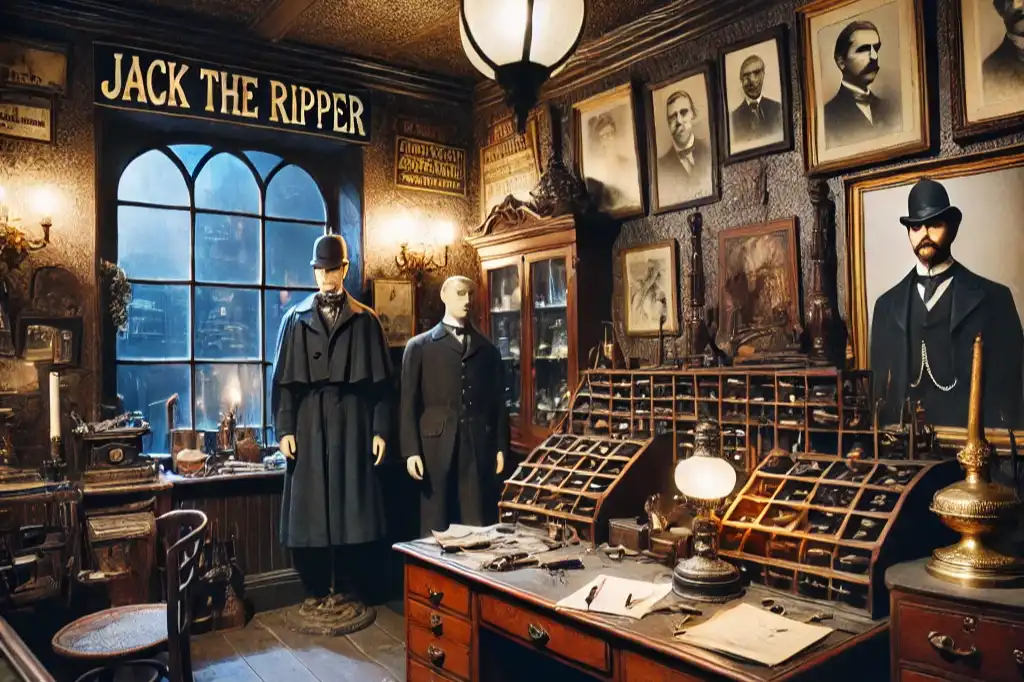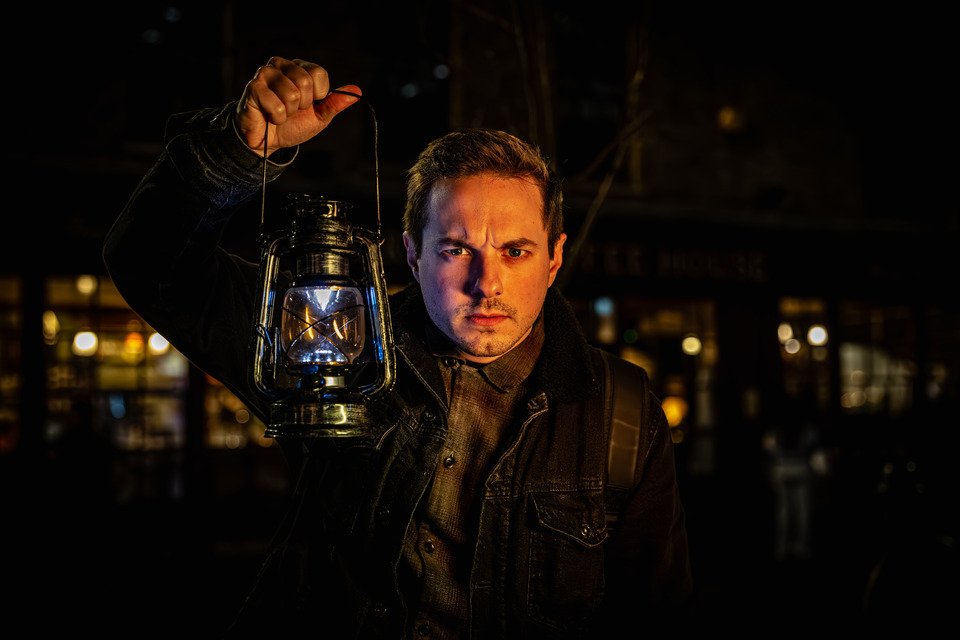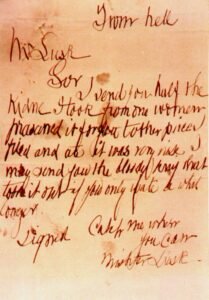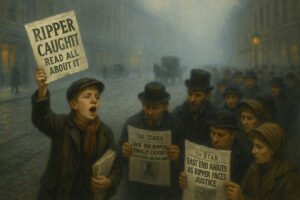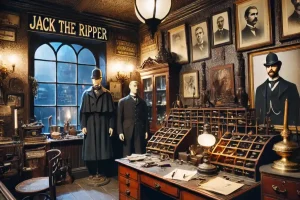Few serial killers from history have captured the popular imagination like Jack the Ripper. His brutality, infamy, and, of course, anonymity have spawned hundreds of books, films, and theories, each trying to solve the crimes which, to this day, remain a mystery.
Explore the streets of Whitechapel on a Jack the Ripper Tour and you come closest to reconstructing the events that engulfed London’s East End in 1888. But if you want further insights into the culture and climate of Victorian London, the Jack The Ripper Museum should be part of your itinerary.
What is the Jack The Ripper Museum?
The museum was the brainchild of Mark Palmer-Edgecumbe, Google’s former Head of Diversity and a long-standing Ripperologist.
While a governor of the Museum of London Docklands in 2008, Palmer-Edgecumbe was involved in an exhibit about Jack the Ripper which was warmly received by critics as an “impressively serious exhibition”. Given his personal interest and professional plaudits, it was perhaps inevitable that Palmer-Edgecumbe would look to open a Jack the Ripper Museum of his own. However, the founding of his museum would not be without controversy.
Controversy around the Jack the Ripper Museum opening
In 2014, architects working for Mark Palmer-Edgecumbe submitted a change of use application to Tower Hamlets Council’s Development & Renewal division which proposed converting an old Cable Street building into a Museum of Women’s History.
Controversially, the proposal stated that the museum’s vision was to “celebrate the historic, current and future contribution of the women of the East End”, and included images of suffragettes and those who fought hard to secure equal pay. The proposal also stated the goal of “sharing, interpreting and presenting the history of women in a unique and inspirational way.”
The frontage unveiled the following summer, however, made no mention of a Museum of Women’s History. Instead, it signposted a Jack the Ripper Museum, sparking outrage among the local community and beyond.
This article preserves parts of the ensuing Twitter storm surrounding Palmer-Edgecumbe’s decision to open a Jack the Ripper Museum. Protests also erupted on the ground around the opening of the museum, and more controversy emerged when an event for Halloween had people dress up as the Ripper and pose for photos with the killer and his victims.
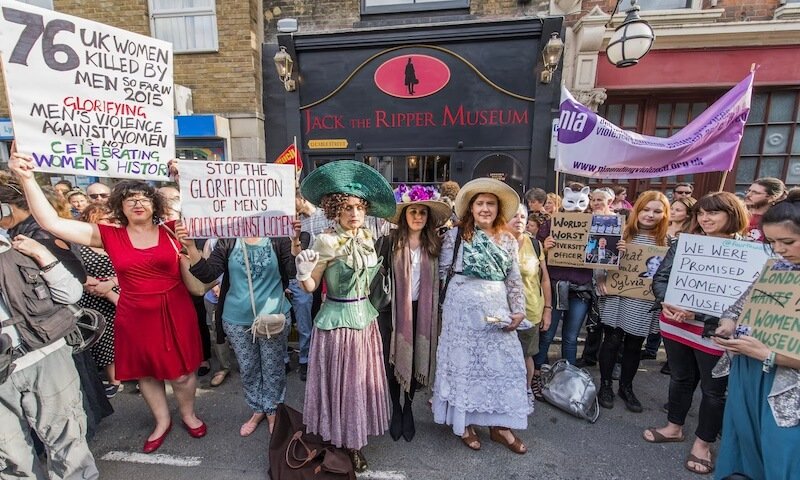
In an interview conducted shortly afterwards with the Evening Standard, Palmer-Edgecumbe claimed that the late change of direction was undertaken to find a more interesting angle.
“We did plan to do a museum about the social history of women but as the project developed we decided a more interesting angle was from the perspective of the victims of Jack the Ripper. It is absolutely not celebrating the crime of Jack the Ripper but looking at why and how the women got in that situation in the first place.”
Palmer-Edgecumbe has since reiterated this position on several occasions. In an interview with the Londonist, he quoted George Bernard Shaw in saying that the Ripper murders did more for social reform than any well-meaning efforts, shining a light on the impoverished lives of women in the Victorian East End. Similarly, a page that has since been removed from the Jack the Ripper Museum’s website states that: “The Jack the Ripper Museum in no way glorifies or glamorises Jack the Ripper… Quite the opposite, it presents the women of the East End’s story for the first time.”
So what is the truth behind this? Is the Jack the Ripper Museum a rip-roaring success or a shameful scandal?
Where is the Jack the Ripper Museum?
The Jack the Ripper Museum is situated in the East End of London at 12 Cable Street.
Fittingly, Cable Street can claim a controversial and conflict-driven history of its own. In 1936, it was the scene of violent clashes between Sir Oswald Mosley’s British Union of Fascists, a group of counter-protesters and the British Metropolitan Police in an event that has come to be known as the Battle of Cable Street.
What to see in the Jack the Ripper Museum?
Behind the dark frontage of the Jack the Ripper Museum (designed to evoke a Victorian shopfront, says Palmer-Edgecumbe), visitors first step inside the gift shop before entering the museum’s five-room exhibition.
First, there is a mocked-up morgue in the building’s basement, which includes shrines to Jack the Ripper’s “canonical five” victims – Mary Ann Nichols, Annie Chapman, Elizabeth Stride, Catherine Eddowes and Mary Jane Kelly – as well as those who fall outside the conventionally accepted Ripperologist timeframe: Emma Elizabeth Smith, Alice McKenzie and Frances Coles.
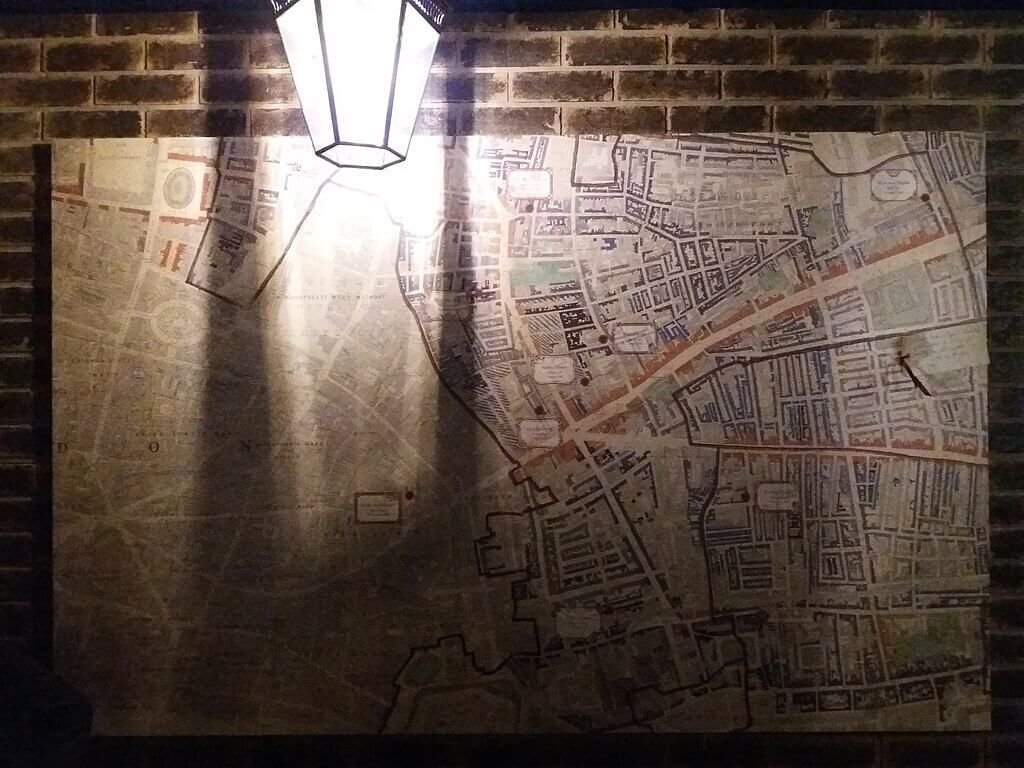
The museum also features a recreation of the Leman Street police station where detectives attempted to identify the murderer, of the bedroom of victim Mary Jane Kelly, and the scene of Catherine Eddowes’ murder, with an effigy of PC Edward Watkins. Another room showcases Watkins’ whistle, which he blew to summon help upon discovering Eddowes’ body, along with the truncheon and notebook case he was carrying while on duty that day.
Given the paucity of evidence for Jack the Ripper’s identity, the fourth room, Jack the Ripper’s Study, is the result of pure invention. It showcases a signature cape on the coat hanger and a desk with small ornamental obelisks and other paraphernalia that have subsequently entered Ripper mythology.
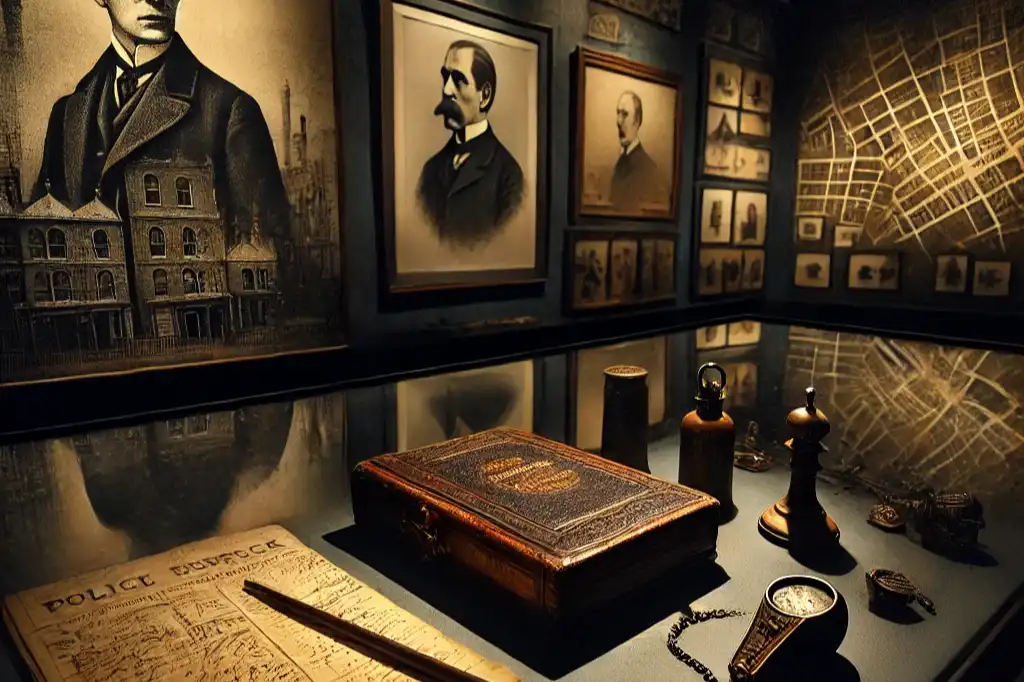
The final of the five rooms – the bedroom of Mary Kelly, the Ripper’s last victim – is the most moving by some distance since it shines a light on the lives of the Ripper’s victims. A tatty bed stands in the corner. Grimy wallpaper decorates the walls. Somewhere in the distance we hear the sound of a woman singing. Photographs of the victims adorn the walls with biographies; in a small adjoining room, quotes from each victim shortly before their deaths are printed on the wall, presumably taken from witness statements.
Want To See The Jack The Ripper Museum?
If you want to see the museum for yourself, then you should think about taking a trip down to the Jack The Ripper Museum on Cable Street. It is a popular addition to Tower Hamlets and should provide you with an excellent idea of what the Jack The Ripper incident must have felt like. Give yourself a clearer idea of the reality of the situation with the help of a visit to one of the best museums in London.
Buy tickets online or visit when the museum is open, and you should have no problem getting a time slot to see for yourself the true horror that was the Jack the Ripper scenario. However, you might wish to be quick: the museum has been up for sale since 2021, and it is expected that the Jack the Ripper Museum will close when the building is sold.
You don’t want to miss out, do you? Whether you come for the education or for the controversy around the museum itself, you will not be disappointed!
How long does it take to visit the Jack the Ripper Museum?
Between one to two hours should be enough to see the Jack the Ripper Museum. If you intend to take one of the museum’s daily tours, it is highly recommended that you visit the museum first.

